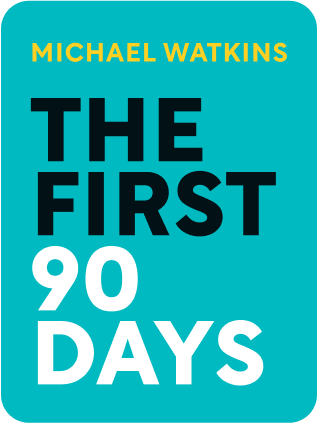

This article is an excerpt from the Shortform book guide to "The First 90 Days" by Michael Watkins. Shortform has the world's best summaries and analyses of books you should be reading.
Like this article? Sign up for a free trial here .
What makes a good team leader? What qualities would you ascribe to a truly great leader? What are push tools and pull tools?
Leading your team is so much more than just assigning tasks and monitoring progress. That is, of course, necessary, but not sufficient to achieve your goals. It’s also important to make sure all team members are on the same page about where the company is going and are motivated to push through.
There are two types of tools you can use to lead effectively: push tools and pull tools.
Aligning Your Team
Having good, competent team members is necessary but not sufficient for the success of the organization. How will roles be defined such that everyone is supporting the bigger picture? And how can you hold people accountable for their element of the equation?
There are two categories of tools at your disposal as you motivate and align your team:
Push Tools
These are performance measurement systems and incentive structures that motivate people through fear, reward, loyalty, and authority. If you are planning on using these tools, consider the following key principles:
- Define, establish, and commit to clear performance metrics that use explicit standards. For example, rather than “grow sales” specify “increase sales by 10% within the first quarter.”
- Consider whether rewards should be based on individual or collective performance. If team members will have to rely on each other to achieve the goal, then rewarding based on collective performance is probably more appropriate. But if you simply need each employee to perform at their highest level to achieve success, individual rewards may be more effective. As you prepare award structures, keep an eye towards the different factors that incentivize people. For example:
- An employee’s total reward = nonmonetary reward + monetary reward
- Nonmontetary awards = advancement opportunities and other recognition
- Monetary rewards = fixed compensation + performance based compensation.
If you have agency to decide what weight to give these different elements of the equation, remember that the ratio of fixed compensation to performance based compensation should be informed by how directly you can measure the results of a given employee (the more directly, the more reasonable it is to compensate based on performance).
Pull Tools
These tools motivate people through positive and aspirational notions about what you can accomplish together. Leading your team to the company’s vision is essential and you can do so effectively by:
- Focusing on what contributions you are making to society or what your team can accomplish together.
- Telling a story and clearly explaining how your team fits into it.
- Using compelling and evocative language. For example, saying you want to launch more rockets into space is less compelling than saying you want to put a man on the moon.
- Considering the ideas of others while being clear about the nonnegotiable components of the plan. This creates shared ownership and greater buy-in.
- Using metaphors to help bring the vision to life and crystalize it for employees.
- Repeating the vision over and over again. If your vision is too complex it will not stick.
- Not doing it alone. Instill the vision in other key actors so that they too can disseminate and communicate it regularly to the whole team.
Offsite planning can also be a good tool for strategizing and coalescing around a shared vision. Essential to any offsite meeting, however, is a good facilitator (which may or may not be you depending on the goals and your skill sets). Be realistic about what you can achieve in one meeting, and remember that you can always have more sessions. Make sure that the session has a clear purpose such as:
- Diagnostic—Helping create a shared understanding of where the company is at
- Strategic—Getting on the same page regarding vision and next steps
- Team building—Improving how well everyone works together
- Relationship work—Evaluating and improving personal dynamics
- Planning—Hashing out the details of a plan for implementation
- Conflict resolution—Working through specific tensions or hurdles
Finally, as you evaluate what combination of push and pull factors will be most beneficial in the process of aligning your team, remember that different team members may be incentivized by different tools so be prepared to employ them accordingly. Additionally, don’t forget to fold-in the STARS stages to your approach. For example, turnarounds are innately fueled by push factors because everyone is keenly aware that drastic action is needed to save the company.
Leading Your Team
Your team has been assessed, shaped, and aligned. Now, how will you lead it? What will the day-to-day processes and mechanisms of communication and planning be? Consider these factors as you plan your leadership approach:
First, it’s important to develop an understanding of current team processes by talking to members about how things have been done historically and reviewing meeting agendas and minutes. You’ll want to ask key questions such as:
- How frequently did meetings occur? Who set the agenda? Did people show up with energy or try to avoid them?
- Who made key decisions and how were they communicated to the team? Over email? Through back door channels? Through weekly announcements?
- What was the leadership style of your predecessor? What differences can you identify between you and him? What impact might those differences have on the team?
Second, you will also want to identify areas that need improvement and think through an implementation and communication plan for those changes. For example, are meetings currently too inclusive and nothing gets done? Or are they too exclusive and lack key input?
Third, reflect on the different ways that decisions can get made. For example, they can be made unilaterally and some scenarios might benefit from you making a hard decision yourself. By contrast, you could try and achieve unanimous consent for a particular decision. However, between those two extremes are two other possible decision making models including:
- Consult-decide, whereby you solicit and incorporate input from the team but make the decision yourself.
- Build consensus, whereby you solicit feedback and also seek agreement among a critical mass before committing to a decision.
Don’t assume that consult-decide is preferable when you are in a crunch just because it would be faster. You could end up doing even more work on the back-end trying to rationalize your decision to others. Beware, also, of the action imperative here—you’re antsy to get things done in your new role and thus might skip over essential processes. Use these considerations to evaluate which approach might be right in a given scenario:
- If it’s a highly controversial decision consider making it yourself. You’ll never achieve consensus and thus you should take the hit so the team can move on as quickly as possible.
- If you will be dependent on other people to implement the decision, consider getting their buy-in ahead of time by building consensus.
- If you are working with an inexperienced team consensus building might be frustrating and ineffectual. For now, they may benefit from you making decisions while they learn and grow into their roles.
- If you need to establish authority (perhaps you are supervising former peers), use consult and decide to send a signal about your new role.
Also, don’t forget about how your STARS stage might inform your approach. Startups and turnarounds are well situated for consult and decide because concrete decisions need to be made to get things off the ground and people are looking for a direction. By contrast, realignment and sustaining success often come with a firmly established team that might respond poorly to consult and decide.
It’s okay if you have a preference for one style of decision making over the other but don’t get too attached—it’s important to try and also build your skills in the other approaches. Consider articulating your approach explicitly to the team so that people have clear expectations and feel like a thoughtful process was put in place regardless of the substantive outcome. Be careful not to create a hollow process, however. People will see right through faux consensus building. Once you feel more confident, you may be able to alternate between the approaches without creating confusion or instability in the team.
Special Considerations for Virtual Teams
Some teams face unique challenges because they are not operating in a shared physical space. A few pointers for leading a virtual team include:
- Bring the team physically together, from time to time, to develop rapport.
- Have clear rules and expectations for emails and group calls (e.g., which emails require urgent responses, how to minimize the chaos of interruptions during calls, and so on).
- Consider creating structure for information sharing and accountability by assigning roles for meetings (e.g., note taker or agenda lead).
- Create some regular and consistent spaces for interaction (e.g., regular weekly meetings) so that there is some reliable form and structure.
- Celebrate successes to create a sense of cohesion and shared accomplishments.

———End of Preview———
Like what you just read? Read the rest of the world's best book summary and analysis of Michael Watkins's "The First 90 Days" at Shortform .
Here's what you'll find in our full The First 90 Days summary :
- A field guide for anyone undergoing professional transition
- How to develop strong relationships with your new colleagues
- Why early wins are so important






